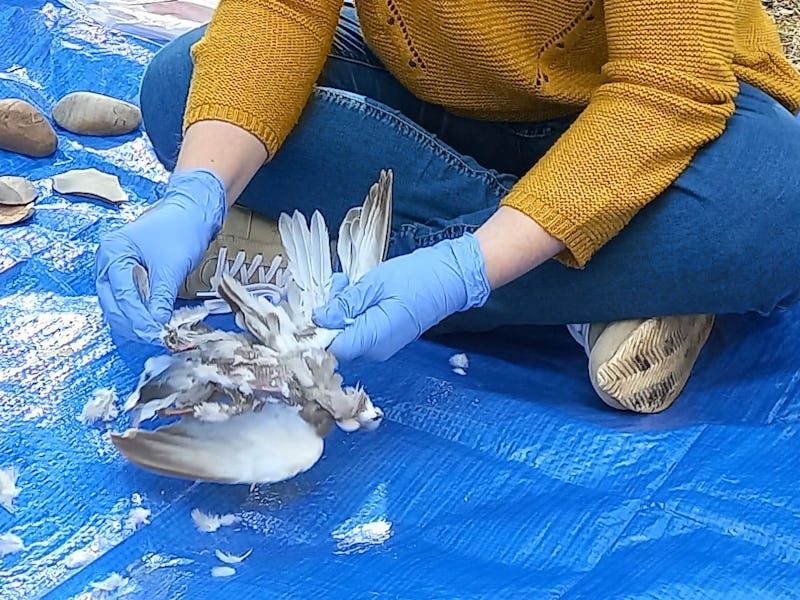These Researchers Cooked Like Neanderthals for Science
Cooking with a flint flake isn’t as easy at Neanderthals make it look.

Leftovers can tell us a lot about how a species lived. In the case of Neanderthals, there are few archaeological traces of how they processed and ate small prey, like birds. This paucity of evidence could be due to how they processed meat in different ways — some processing methods may have degraded the bones, for instance. But one team of researchers decided to take matters into their own hands: Working backwards, they decided to recreate Neanderthal meals so they would know how to recognize processed bones.
To know what to look for and better understand how Neanderthals processed their food, the researchers, in Spain, did an experimental cooking class, Neanderthal-style. They found that the processing method indeed influences whether leftovers might survive to become artifacts one day. They published their findings today in the journal Frontiers in Environmental Archaeology.
How to cook like a Neanderthal
Every cooking experiment starts with fresh ingredients. The team sourced theirs from the Wildlife Ecology, Rehabilitation and Surveillance Centre in Gouveia, Portugal. They searched for bird species commonly associated with Neanderthal diets on the Iberian Peninsula. Ultimately, they ended up with 5 birds: two carrion crows, two Eurasian collared doves, and one common wood-pigeon.
In order to understand how different Neanderthal cooking methods would produce different remnants, the team butchered the birds in two different ways. They butchered one crow and one dove uncooked, while the other crow, dove, and pigeon were butchered after cooking. In true Neanderthal-style, the team used a flint flake to butcher the deceased birds.
As for the three cooked birds, the team roasted them over hot coals: 4 minutes on their bellies, then 3 minutes on the other side. Processing roasted meat wasn’t nearly as difficult as in raw specimens. “In roasted specimens, the meat fell away effortlessly,” the paper reads. The paper also described how the researchers processed the two raw bird carcasses.
“Using a flint flake for butchering required significant precision and effort, which we had not fully valued before this experiment,” lead author Mariana Nabais, a postdoctoral archaeology researcher at the Institut Català de Paleoecologia Humana i Evolució Social in Spain, said in a press release.
Nabais and her team found that cooked birds bore no cut marks and greater bone loss due to heat exposure. This observation indicates that cooking methods affect preservation of skeletal remains. In other words, whether Neanderthals butchered raw or cooked birds influences the presence of their leftovers for us to find. Roasting a bird before butchering it, for instance, increases the likelihood that the bones will degrade before they’re found.
As for the raw bird meat, some cut marks adorn the bones. Analysis of wear and tear from lithic tools is consistent with past observations of other experiments. These bones, on the other hand, are more likely to survive and bear the marks of butchering.
Even though the researchers weren’t working directly with archaeological remains of Neanderthal food, this endeavor helps them build an experimental database that can be compared with real findings. Their experiment recreating the Neanderthal cooking process elucidates what cut marks might appear, signaling to them what to look for in real specimens. By simulating Neanderthal cooking and butchering techniques, the team created a point of reference to use in comparison to actual artifacts.
As is usually the case, more research is in order. This experimental sample size included only 5 birds. “Further research with larger samples, varied species, and more diverse experimental conditions is necessary to expand upon these results,” Nabais said in the press release.